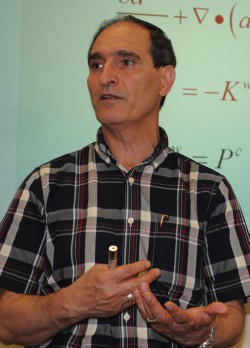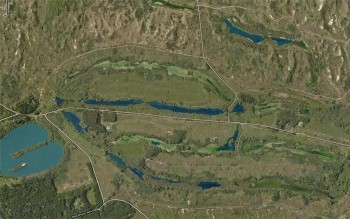Darcy Lecture: Transport of Viruses in Partially Saturated Soil and Groundwater
April 9, 2012

How many live viruses can your cup of water have in it before you decide not to drink it? In the Netherlands, the law requires that municipal drinking water must be so clean that the theoretical risk of viral infection is less than one in 10,000 people per year. That translates to no more than one virus per 5,000 cubic meters of water, or about two Olympic-size swimming pools.
A third of drinking water in the Netherlands comes from surface water, which can easily be contaminated with pathogenic microorganisms and viruses from wastewater discharges or manure runoff. In some areas, surface water is pre-treated using a series of high tech tools including UV radiation, ozone, or filtration membranes and then finally treated to remove viruses and other pathogens using a relatively low-tech approach developed 150 years ago.
Majid Hassanizadeh, professor at Utrecht University in the Netherlands, visited Austin in March to deliver his Darcy Lecture as part of a world tour sponsored by the National Groundwater Association. He described how sand dunes are used to provide the final step of purification. Pre-treated surface water flows along in canals next to naturally occurring sand dunes. Pure drinking water is extracted from wells about 60 meters from the canals. As the water filters through the sand, viruses stick to sand grains, where most are chomped up by bacteria and protozoans. By the time the water reaches the wells, the viral concentrations are well below the allowable limit.

Hassanizadeh uses physical field models, computer simulations and lab experiments to study the factors that control how far viruses move through sand. He’s discovered that changes in calcium concentrations or in the saturation of sand can cause viruses that were once trapped to become remobilized. He said this research could help a water supplier know when to stop extracting drinking water from the system. For example, some drinking water is filtered from natural rivers through riverbank sediments. These rivers can rise rapidly during heavy rainfall and potentially allow viruses to travel much farther through the sediment than before.
There are other motivations for the work. For example, it could help determine how far apart groundwater wells and sewage lines could safely be to prevent viral contamination.
